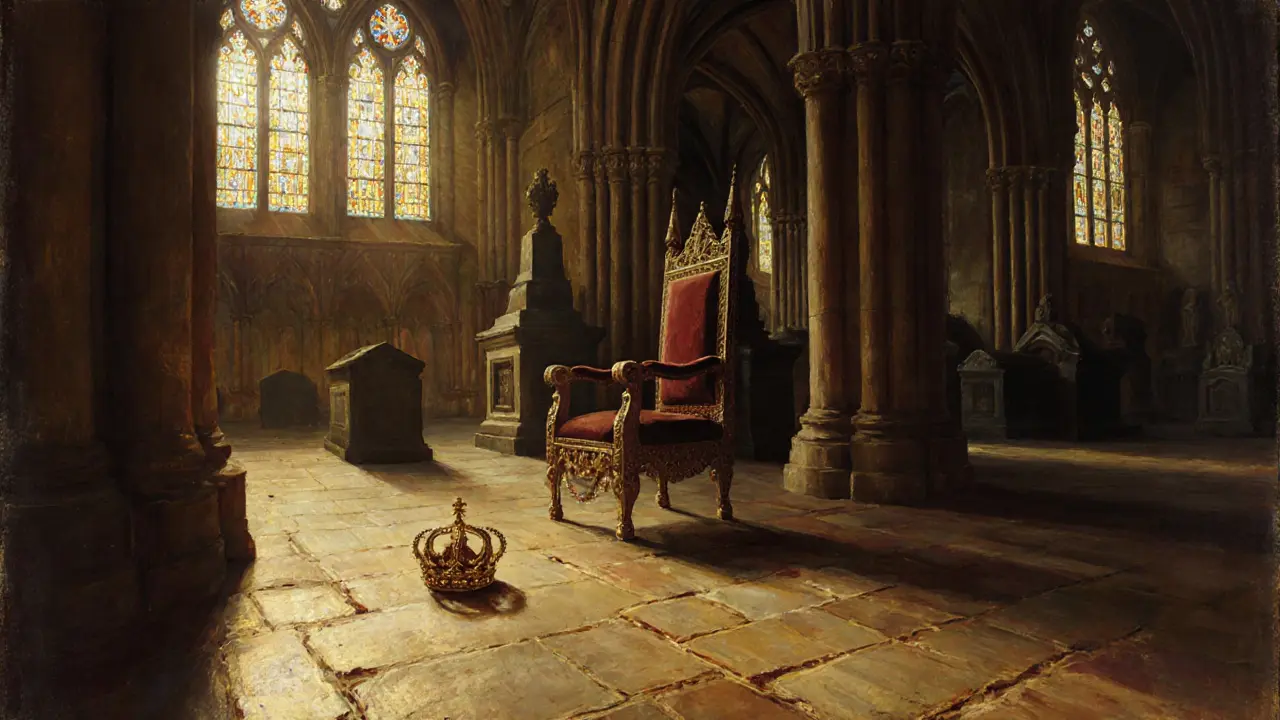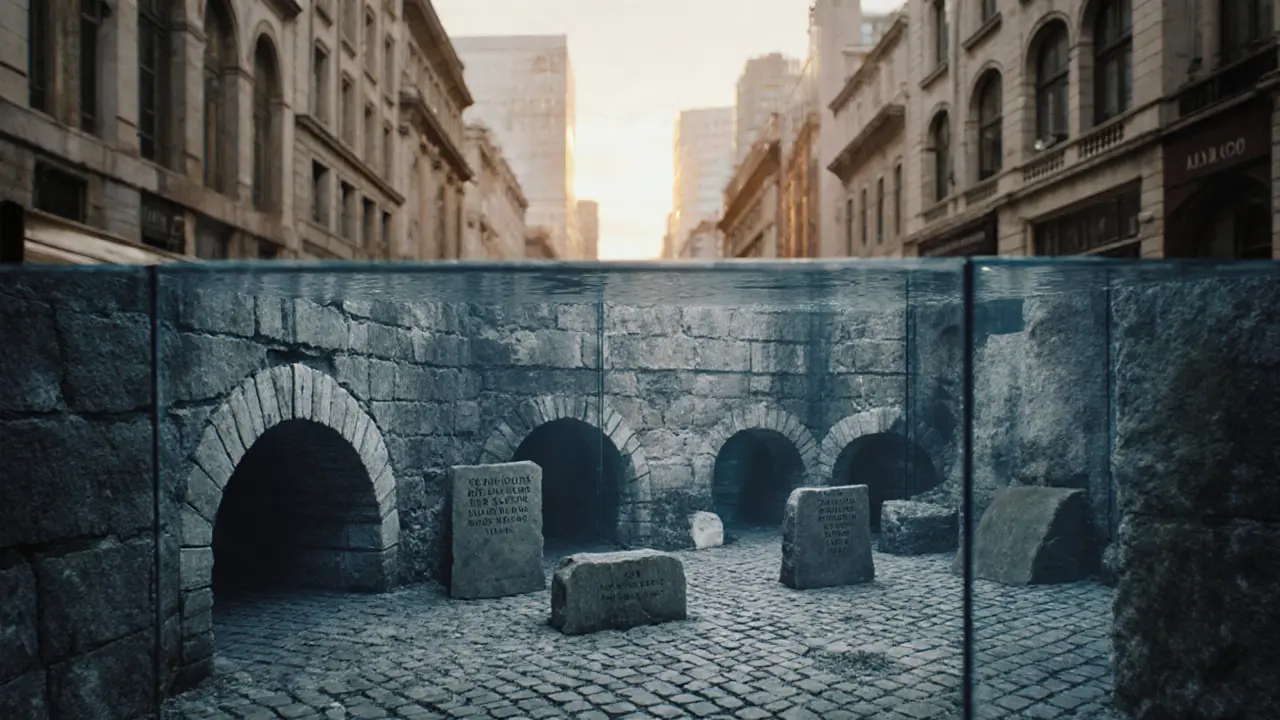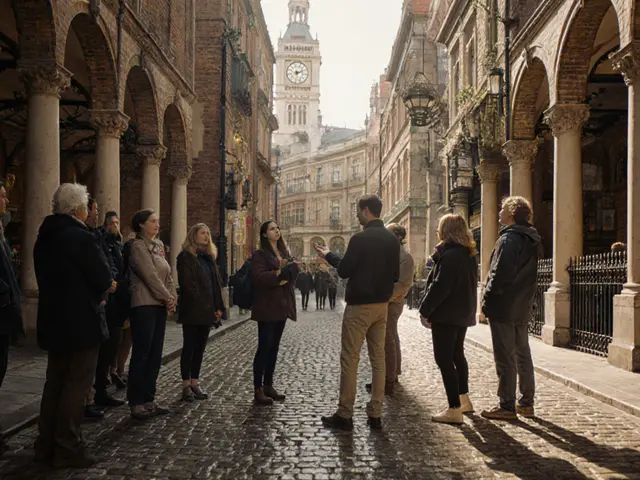London isn’t just a city-it’s an open-air museum where every cobblestone, brick wall, and statue tells a story older than the UK itself. For history buffs living in or visiting London, the past isn’t locked behind glass cases in museums. It’s walking down the same streets as Tudor kings, standing where Romans built their first bridge, and peering into the same windows where Parliament debated the fate of empires. If you’ve ever wondered where to start your journey through Britain’s layered past, here are the must-see landmarks that shaped London-and the world.
The Tower of London: Where Power, Treason, and Crowns Collide
There’s no better place to begin than the Tower of London. Built by William the Conqueror in 1078, this fortress has served as royal palace, prison, armory, treasury, and zoo. Walk through the Bloody Tower, where the Princes in the Tower vanished in 1483, and stand where Anne Boleyn was beheaded on Tower Green. The Crown Jewels, guarded by Yeoman Warders since the 15th century, are displayed in the Jewel House with the same heavy security they’ve had since Charles II’s reign. Don’t miss the daily Ceremony of the Keys-a 700-year-old ritual where the Tower is locked up at night, just as it has been since medieval times. It’s not a show. It’s tradition.
Westminster Abbey: The Sacred Ground of Coronations and Kings
Just a five-minute walk from the Houses of Parliament, Westminster Abbey has witnessed every English and British monarch’s coronation since 1066. Henry III rebuilt it in Gothic style in the 13th century, and it’s been the burial site for 17 monarchs, including Elizabeth I and Mary, Queen of Scots. Poets’ Corner holds the tombs of Chaucer, Dickens, and Hardy-literary giants who never held a crown but shaped the soul of the nation. If you’ve ever wondered why British royalty still holds ceremonies here, it’s because this building is the living archive of the monarchy’s legitimacy. Even the floor tiles are centuries old, worn smooth by generations of kings, queens, and commoners.
Stonehenge: The Ancient Mystery Within Reach
Yes, Stonehenge is outside London-but it’s an essential pilgrimage for any serious history lover. Just 90 minutes by train from London Waterloo to Salisbury, then a short bus ride, this 5,000-year-old stone circle still baffles archaeologists. Recent excavations near the site uncovered evidence of a nearby settlement, suggesting it wasn’t just a ritual site but a hub of Neolithic life. Visit on the summer solstice, when hundreds gather to watch the sunrise align perfectly with the Heel Stone. The National Trust runs guided walks from London, and you can even book a private tour that includes a stop at Avebury, another Neolithic site with standing stones you can walk among-unlike Stonehenge, where ropes keep you at a distance.

The Roman Baths in Bath: A Spa Fit for an Emperor
Bath, another easy day trip from London (under 1.5 hours by train from Paddington), is where Roman engineering met British leisure. The Romans built their grand baths around a natural hot spring in 70 AD, and the water still flows today at 46°C. Walk through the Great Bath, where aristocrats once soaked in the mineral-rich waters, and peer into the Sacred Spring where offerings were thrown to the goddess Sulis Minerva. The museum displays over 12,000 Roman artifacts, including curse tablets-lead sheets with written pleas to the gods to punish enemies. One reads: “I curse the person who stole my hooded cloak.” It’s the ancient equivalent of a Yelp review.
Hadrian’s Wall: Rome’s Northern Edge
For those willing to travel a bit farther, Hadrian’s Wall is the ultimate symbol of Roman ambition. Stretching 73 miles from Newcastle to Carlisle, it was built in 122 AD to keep out the Picts. Walk a section near Housesteads Fort, where you can still see the original latrines, barracks, and granaries. The wall wasn’t just a barrier-it was a border town. Soldiers from Syria, Spain, and Germany lived here, traded with locals, and left behind altars to their gods. The Vindolanda tablets, found nearby, are the oldest handwritten documents in Britain-letters from soldiers’ wives asking for more socks and wine. It’s history you can touch, not just read.
London’s Medieval Streets: The City’s Hidden Layers
While tourists flock to the Tower and Westminster, few notice the medieval bones beneath modern London. Head to the City of London-past the Gherkin and the Bloomberg building-and find the remnants of Roman Londinium. The London Wall, built by the Romans around 200 AD, still stands in patches near Tower Hill and near the Museum of London. At St. Bartholomew-the-Great, the oldest surviving part of a priory founded in 1123, you can see Norman arches and a 900-year-old cloister. Even the street layout of Cheapside and Aldersgate follows Roman roads. Look down at the pavement in places like Paternoster Square, and you’ll see glass panels showing the original Roman street level-six feet below today’s sidewalks.

Edinburgh Castle: Scotland’s Echo in London’s Shadow
Though technically outside England, Edinburgh Castle is too significant to skip. Londoners often forget that Scotland’s history is woven into Britain’s. The castle, perched on an extinct volcano, has been a royal residence since the 12th century and holds the Stone of Destiny-the very stone on which Scottish kings were crowned. It was brought to London in 1296 by Edward I and only returned to Scotland in 1996. The Crown Jewels of Scotland-the Crown, Sceptre, and Sword of State-are displayed here, and they’re far more ornate than England’s. Take the train from London King’s Cross to Edinburgh (under 4.5 hours) and spend a day walking the Royal Mile. You’ll understand why the Union of the Crowns in 1603 was more than politics-it was the merging of two ancient identities.
London’s Forgotten Churches: Where the Past Still Prays
Most people don’t realize that over 50 churches in London date back to before the Great Fire of 1666. St. Etheldreda’s in Holborn is the oldest Catholic church in England, built in 1290. St. Helen’s Bishopsgate has 14th-century wall paintings still visible under the pews. And St. Mary-le-Bow, famous for its bells that define the “true Cockney” (born within earshot), was rebuilt by Christopher Wren after the fire. These aren’t tourist traps. Locals still attend services, and the quiet courtyards are perfect for a lunch break with a pasty from a nearby bakery.
Why These Sites Matter More Than Ever
In a city that’s constantly changing-where new skyscrapers rise every year and old pubs turn into co-working spaces-these landmarks are anchors. They remind us that London’s identity wasn’t built in a decade, but over two millennia. Whether you’re a student researching Tudor politics, a tourist snapping photos, or a lifelong Londoner who’s never stepped inside Westminster Abbey, these places offer more than views. They offer context. They answer the question: how did we get here?
Start with one. Then another. Don’t rush. Sit on a bench near the Tower’s moat. Listen to the chimes of Big Ben echo over the Thames. Walk the same path a Roman soldier did. History isn’t something you visit-it’s something you feel.
What’s the best way to visit London’s historical landmarks without spending a fortune?
Many of London’s top historical sites offer free entry or discounted tickets for London residents. Westminster Abbey charges £27 for tourists, but locals can attend services for free. The Museum of London is free to enter, and the Tower of London has discounted tickets for UK residents on certain weekdays. Use the London Pass only if you plan to visit 3+ paid attractions in a day. Otherwise, buy individual tickets online in advance-many sites offer 10-15% off. Don’t forget National Trust and English Heritage memberships-they cover Stonehenge, Hadrian’s Wall, and dozens of lesser-known sites for £70 a year.
Are guided tours worth it for history buffs?
Yes-if you choose the right ones. Skip the loud, generic bus tours. Instead, book a small-group tour led by a historian or archaeologist. The Society of Antiquaries offers walking tours of Roman London. The Tower of London’s Yeoman Warders give free talks that are far more detailed than any audio guide. In Bath, the Roman Baths’ guided tours include access to areas closed to the public. Look for tours that mention primary sources, excavation reports, or unpublished findings-they’re the ones run by experts, not salespeople.
Can I see Roman London without leaving central London?
Absolutely. The Museum of London has the largest collection of Roman artifacts in the UK, including the only surviving Roman temple statue of Mithras. The remains of the Roman amphitheatre lie beneath the Guildhall Art Gallery-you can view them through glass floors. Walk along the Thames Path near London Bridge and you’ll see the original Roman wharf stones. Even the City’s street names-like Walbrook and Dowgate-come from Roman waterways and gates. You don’t need to travel far; you just need to look down.
Which landmark is most underrated by tourists?
The Charterhouse in Smithfield. Founded in 1371 as a Carthusian monastery, it later became a hospital and then a retirement home for gentlemen. The chapel, cloisters, and Tudor courtyard are untouched since the 16th century. It’s quiet, uncrowded, and open to the public on select days. Locals know it as the place where the plague victims were buried-and where the last duel in London was fought in 1821. It’s history without the noise.
Is it better to visit landmarks in summer or winter?
Winter has advantages. Crowds thin out, and the light is softer for photos. At Stonehenge, winter solstice visits are less crowded than summer. Many sites offer evening openings in December-Westminster Abbey holds candlelit concerts. Plus, indoor sites like the Roman Baths and the Tower of London are more comfortable in colder weather. Summer is great for outdoor sites like Hadrian’s Wall, but expect queues. If you can, visit in late spring or early autumn-mild weather, fewer tourists, and the trees around Westminster Abbey turn golden.
If you’re serious about London’s history, start with one site this month. Pick the one that calls to you-the crumbling wall, the silent chapel, the ancient stone. Then go back. History doesn’t reveal itself in a day. It reveals itself slowly, in quiet moments, when you stop scrolling and start seeing.


